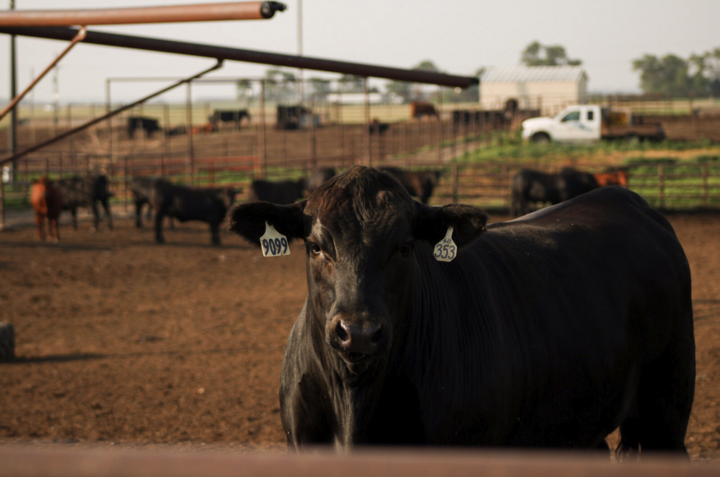As we approach the end of May, it may be time to start thinking of the summer heat, particularly that first heat event that cattle and folks who manage may not be prepared for. The following is a list of some strategies cattle feedlot managers and their crews could begin thinking about as nice weather today turns into heat-stressing weather later.
The list is divided into areas of focus based on cattle type, feeding and watering considerations, and facilities management.
Heat management based on cattle size and type
- Keep cattle marketing current to avoid excessively heavy cattle.
- Consider extending show lists to include pens that are from 30 to 45 days of initially projected final weight.
- Place cattle with light-colored coats in pens with greater propensity to create heat stress.
Feed adjustments to consider in hot weather
- Higher fiber concentrations in feedlot diets lower the peak of heat of fermentation.
- Afternoon/evening deliveries prevent excessive heat load.
- Avoid challenging cattle to eat more when hot weather is forecast.
Water considerations for feedlot cattle
- Keep these concentrations below the following recommended levels:
Total dissolved solids — 3,000 mg/L (or parts per million/ppm)
Sulfate — 1,000 mg/L (or parts per million/ppm)
Nitrite — 33 mg/L (or parts per million/ppm)
Nitrate — 45 mg/L (or parts per million/ppm) - Figure daily water intake (approximately) by multiplying dry matter intake by 0.75 to render a workable estimate in gallons per head. (Example: If dry matter intake is 24 lb per head daily, projected summer water need is 18 gallons per head daily).
- Make sure the water flow rate is adequate. Water flow to meet an 1,800-gallon demand for 100 head is 75 gallons per hour (18 times 100 divided by 24 hours) or flow of 1.25 gallons per minute. Plan for cattle daily water needs to be met in 6 rather than 24 hours, which would mean a flow of 5 gallons per minute minimum is required in this scenario.
- Cattle access at the water tank should permit 48” of linear space per animal and for 5% of the pen population.
- Maintain water quality by regularly cleaning water troughs.
- Stray voltage may be the reason cattle in certain pens underperform. Check for stray voltage.
- Add temporary water tanks if necessary.
Shade, bedding, sprinklers, and windbreaks for feedlot heat management
- Deploy temporary shades.
- The minimum area to consider shading an individual animal should be 32 square feet.
- Bedding during hot, summer days keeps cooler surface temperatures and permits space management.
- Test and adjust or repair sprinkler heads.
- Bedding stacks and any other temporary windbreak structures should be removed from the vicinity of pens.
- Control weeds and grass growth within pen alleys and waterway berms.
- Deploy fly control programs that consider premises, habitat, and on-animal control.
The intention to release this list well ahead of any heat event was to aid in reminding feedlot managers and their crew to start preparing for heat events. However, some items listed above must be in place well ahead of the heat stress events.
These include placing more heat-tolerant cattle in pens prone to experiencing greater heat loads, evaluating water tanks or other areas for stray voltage, increasing water access, deploying sprinklers and shades, and controlling fly and weed populations. In some cases, cattle need to be accustomed to these strategies while in others, such as fly control, the target organism needs to be exposed to the intervention well ahead of the heat event.

